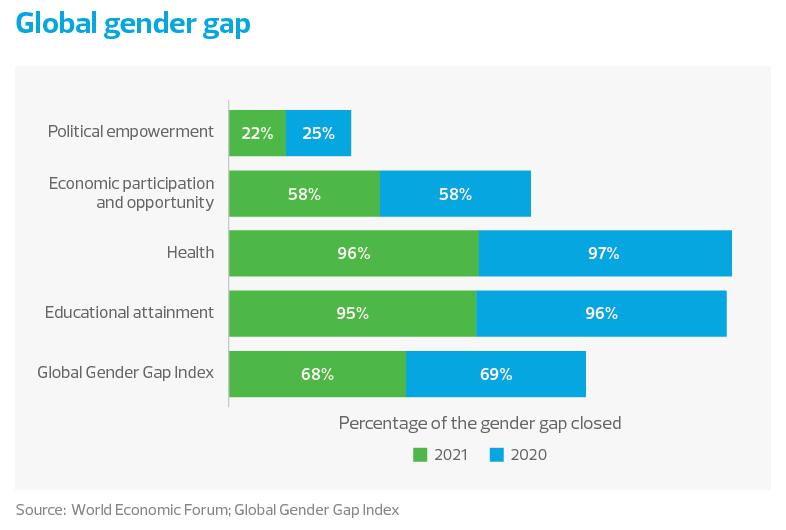Do men continue to make more than women? Overall, it would appear so, but we see some encouraging trends below the surface.
According to a 2021 diversity, equity and inclusion survey conducted by the compensation software company Payscale, women in the United States earn 82 cents for every dollar earned by men. Digging deeper, however, it appears that when men and women have the same job and qualifications, the median salary gap narrows to near equity, with women earning 98 cents for every dollar earned by men. While this number is positive, the data highlights other hurdles that have yet to be crossed. The gender pay gap widens with age and job level; in addition, men's salaries increase faster than women's salaries as they progress in their careers.
In honor of Women's History Month and International Women's Day on March 8, it is important to understand the factors behind these disparities in order for opportunities to improve for all.
The global gender gap
Gender equity is about more than just wages. The World Economic Forum introduced the Global Gender Gap Index in 2006 to measure the progress of gender parity, which is measured based on improvement in four factors - economic opportunity, education, health and political leadership - from 156 countries across the globe. The index fell in 2021 from a year earlier, which is not surprising considering the effects of the pandemic both on health and the economy, women's fallback position as primary caregivers and additional work responsibilities. Using the results of the past 15 years as a proxy, it will take more than a century, roughly 135 years, to finally close the global gender gap.



